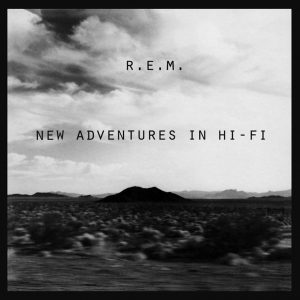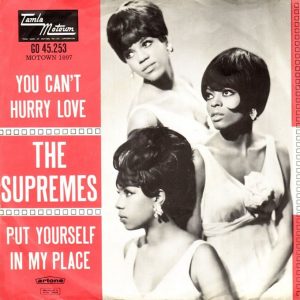When Nirvana’s signature hit, “Smells Like Teen Spirit,” first impacted in 1991, the music industry barely knew what hit it. After a decade during which popular music was dominated by synthesizers, big hair, and excessive production techniques, deliverance had finally arrived in the shape of three outsiders from Seattle spearheading what the press had dubbed grunge music: a genre hell-bent on revitalizing the spirit of rock’n’roll.
Listen to the best grunge music on Spotify.
The birth of grunge music
Historical revisions of rock music have continually cited grunge music as the unlikely, plaid-clad savior of primeval rock’n’roll and the slayer of late 80s hair metal bands. There’s truth in this much-espoused hypothesis, and also in the fact that grunge lit the touchpaper leading to the 90s alt.rock explosion. Yet while grunge only hit commercial pay dirt with Nirvana’s Nevermind in ’91, the roots of this hard, heavy, yet sonically disparate Seattle-centric movement can actually be traced back to the US underground rock scene of the early 80s.
That grunge music will always be synonymous with North America’s Pacific Northwest is undeniable. Green River (later Mudhoney) vocalist Mark Arm is generally credited as being the first to use the term “grunge” in the genre-specific sense, when he described the music of his first band, Mr Epp And The Calculations, as “Pure grunge! Pure noise!” in Seattle fanzine Desperate Times, in 1981. Green River’s second EP, Dry As A Bone, from 1986, also became one of the earliest releases on the influential, Seattle-based indie Sub-Pop, whose promotional material described the contents as “ultra-loose grunge that destroyed the morals of a nation.”
Outside of the Pacific Northwest, though, US bands from the mid-to-late 80s playing raw, distorted, and feedback-intensive rock, ranging from New York’s Sonic Youth to Boston’s Dinosaur Jr and Austin’s Butthole Surfers, deserve credit for influencing the course of grunge music. Much later, Nirvana’s Kurt Cobain admitted to Rolling Stone that acclaimed Bostonians Pixies were also a primary inspiration. “We used their sense of dynamics, being soft and quiet and then loud and hard,” he told writer David Fricke during an interview in January 1994.
However, while Seattle continued to spawn bands alchemizing singular fusions of punk and metal, such as Mudhoney’s frenzied ‘Touch Me I’m Sick’ and Melvins’ sludgy, Black Sabbath-esque debut album, Gluey Porch Treatments, across 1987-88, the idea of obscure outfits from the remote Pacific Northwest challenging the hard rock hegemony and competing with colossal mainstream rock records such as Guns N’ Roses’ Appetite For Destruction and Metallica’s … And Justice For All still seemed wilfully absurd on paper.
Grunge enters the mainstream
During 1988, though, the international rock press first latched onto this exciting new music emerging from the Pacific Northwest. That year, burgeoning Seattle scenesters Nirvana released their first single, a hypnotic cover of Shocking Blue’s “Love Buzz,” which received the Single Of The Week accolade from UK rock weekly Sounds. Following the release of their critically-acclaimed Sub-Pop debut, Bleach, Nirvana were granted the cover of Sounds (along with their Seattle touring partners Tad) in October 1989, while Melody Maker journalist Everett True wrote an article covering the local Seattle scene.
There were also signs the mainstream was getting hip to Seattle when Soundgarden, fronted by the charismatic Chris Cornell, released their major label debut for A&M, Louder Than Love, in 1989, and the short-lived, glam rock-influenced Mother Love Bone – featuring future Pearl Jam stars Jeff Ament and Stone Gossard – recorded their lone album, Apple, for Mercury.
By 1990, the gloves were well and truly off, with Nirvana signing a major deal with Geffen and metal-inclined Seattle outfit Alice In Chains scoring Billboard chart success (and, later, a gold disc) for their Columbia Records debut, Facelift.
The dam broke in 1991, when grunge morphed into a bona fide global phenomenon. Not only did Nirvana irrevocably alter the course of rock with their iconic Nevermind, but the vital post-Mother Love Bone outfit Pearl Jam also tore up the mainstream with their multi-platinum-selling debut, Ten, while Soundgarden’s third album, Badmotorfinger (including the classic singles “Outshined” and “Rusty Cage”), won a Grammy nomination for Best Metal Performance.
Grunge music’s legacy
Key grunge albums released during the next 12 months, meanwhile, demonstrated what a broad church grunge music had become. Their commercial breakthrough would come with 1993’s Siamese Dream, but The Smashing Pumpkins’ ambitious debut, 1992’s Gish, found Billy Corgan’s outfit flirting with prog, folk, and psychedelia, while California’s Stone Temple Pilots released the hits-stuffed Core and Alice In Chains released the remorselessly heavy, yet critically acclaimed Dirt. The extent to which grunge had permeated mainstream culture, meanwhile, was reflected by Cameron Crowe’s popular Seattle-based Gen X movie Singles, featuring a highly desirable soundtrack including previously unreleased cuts from Pearl Jam, Soundgarden, The Smashing Pumpkins, and Alice In Chains, plus solo Chris Cornell recordings under the name Poncier.
By 1993, grunge was even making its presence felt in the fashion world, with designers from Karl Lagerfeld to Marc Jacobs including elements of flannel shirts, ripped jeans, and combat boots in their contemporaneous collections. Musically, scene spearheads Nirvana, Pearl Jam and The Smashing Pumpkins were all still releasing mandatory, critically-acclaimed titles such as In Utero, Vs, and Siamese Dream, while earlier Seattle scenesters Mudhoney and Melvins were trying their luck with major-label deals with Reprise and Atlantic, respectively.
Received wisdom, meanwhile, tells us grunge died when Kurt Cobain tragically committed suicide, in April 1994. With hindsight, few would argue, though luminaries from the Seattle scene have remained highly relevant, not least Nirvana’s Dave Grohl – whose Foo Fighters remain one of the contemporary rock scene’s biggest draws – and Pearl Jam, who regularly fill arenas while remaining involved with grass-roots environmental and political issues such as working with Seattle charities for the homeless.
The shockwaves from grunge are still easily detectable, too. Most obviously, the Seattle scene influenced a generation of post-grunge American pop-punk bands in the mid-to-late 90s ranging from Weezer and Blink-182 to Nickelback and Candlebox, while nu-metal bands from the early 00s, such as Korn, Limp Bizkit, and Papa Roach, clearly absorbed much of grunge’s anger and intensity. Fast-forward to the present day to check out vibrant new albums such as Black Moth’s Anatomical Venus, and offerings from recent Sub-Pop signings So Pitted and Pissed Jeans, and it’s all too apparent that grunge remains an essential element of rock’s ever-evolving DNA.




